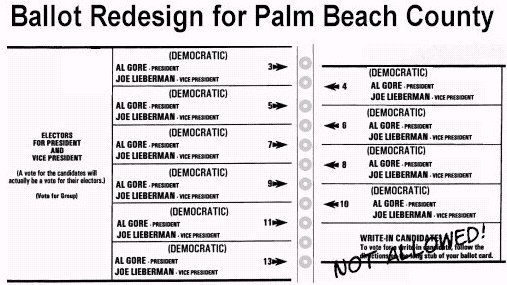

|
Electoral College FAQ The people have votedbut Election 2004 isn't over yet. Now the Electoral College takes center stage. Do you have questions about how this 'college' works? Do you realize that the election isn't official until the electors make their choices? Read on for answers to some frequently asked questions. Q. Can the electors vote for any candidate they want? |
|
|||||||||||||||||||||||||||||||||||||||||||||||
So you think your parents are going to vote for a new president next week?
Well, that is not really so. American citizens who are at least 18 years of age have the right to vote--but not for the President directly. They are really voting for people from their state, called electors, who promise to vote for a certain candidate. The candidate that gets most of the popular votes in each state gets all (except Maine and Nebraska) of the electoral votes from that state!
The electors go to the state capital to cast their votes.
It seems like a confusing system, but when our government was created over 200 years ago, they thought it would be too hard for the people to learn about the candidates. Travel and communication in those days were very difficult. The founding fathers did not want to depend on a popular vote.
So...how does this system work?
To be elected President, a candidate must get a majority of all the electoral votes. (That means more than half.) There are a total of 538 electoral votes. Therefore, someone has to get 270 votes to win. If no one gets a majority, then the House of Representatives decides.
Where do these 538 electoral votes come from?
Each state gets as many electors (and therefore electoral votes) as they have Congressmen.
No state has less than three.
By the way...
It can happen that the candidate who gets the most popular votes
does not get enough electoral votes to win the election!
LIST OF STATES AND ELECTORAL VOTES
Total: 538; Majority Needed to Elect: 270
ALABAMA - 9 HAWAII - 4 NEW JERSEY - 15 NORTH CAROLINA - 14 UTAH - 5 ALASKA - 3 IDAHO - 4 MICHIGAN - 18 NORTH DAKOTA - 3 VERMONT - 3 ARIZONA - 8 ILLINOIS - 22 MINNESOTA - 10 OHIO - 21 VIRGINIA - 13 ARKANSAS - 6 INDIANA - 12 MISSISSIPPI - 7 OKLAHOMA - 8 WASHINGTON - 11 CALIFORNIA - 54 IOWA - 7 MISSOURI - 11 OREGON - 7 WEST VIRGINIA - 5 COLORADO - 8 KANSAS - 6 MONTANA - 3 PENNSYLVANIA - 23 WISCONSIN - 11 CONNECTICUT - 8 KENTUCKY - 8 NEBRASKA - 5 RHODE ISLAND - 4 WYOMING - 3 DELAWARE - 3 LOUISIANA - 9 NEVADA - 4 SOUTH CAROLINA - 8 DISTRICT OF COLUMBIA - 3 MAINE - 4 NEW HAMPSHIRE - 4 SOUTH DAKOTA - 3 FLORIDA - 25 MARYLAND - 10 NEW MEXICO - 5 TEXAS - 32 GEORGIA - 13 MASSACHUSETTS - 12 NEW YORK - 33 TENNESSEE - 11 LESSON #3
Make your own election map. Copy and paste the US map below into "Paint". Color the states green that you think will go for Gore. Color the states blue that you think will go for Bush. Put a legend (key) on your map. After November 7, see how many states you colored correctly.
The title of your map should be:
ELECTION 2000
Electoral Votes( You will need to go into "Page Setup" to change you layout to "Landscape". )
LESSON #3
Go to this site:
http://teacher.scholastic.com/newszone/specialreports/election/index.htm
and read about the recount.

The following ballots are a type of political cartoon. Study both of them.
Go to Microsoft Works, Word Processor. Copy and paste either Ballot A or Ballot B on the page and explain what point the cartoonist was trying to make for the ballot you chose. Include who or what the cartoonist is mocking.
Do not forget to include a topic sentence.
BALLOT A

BALLOT B
